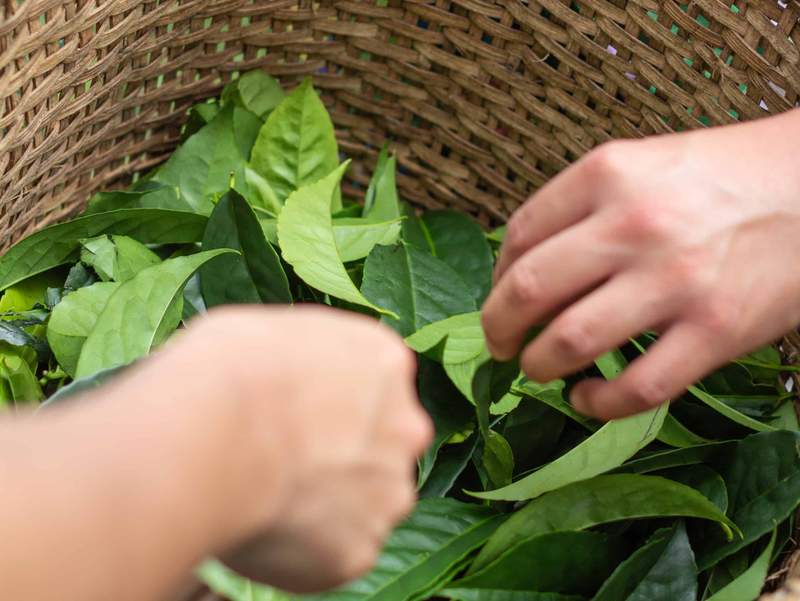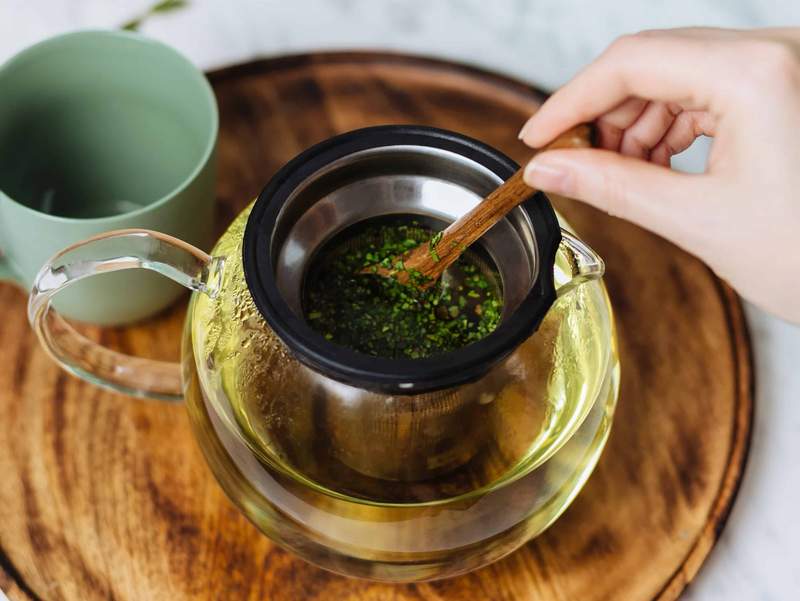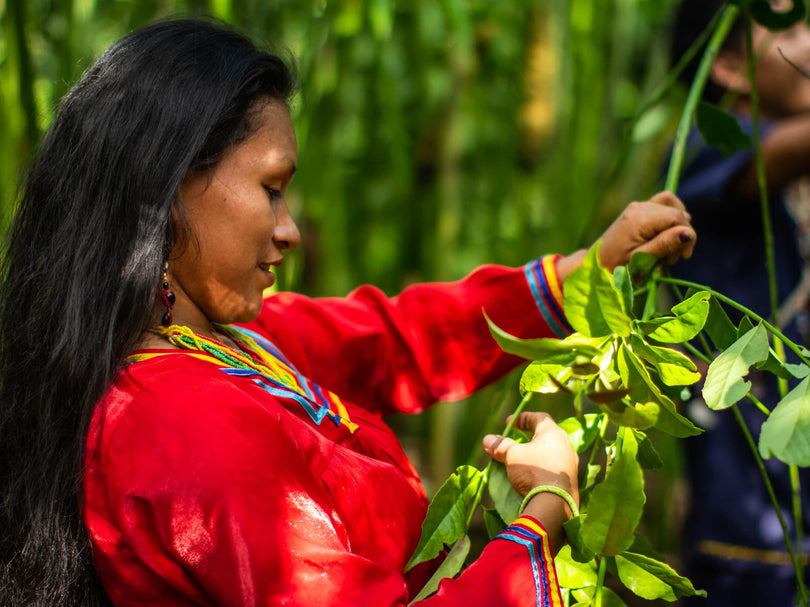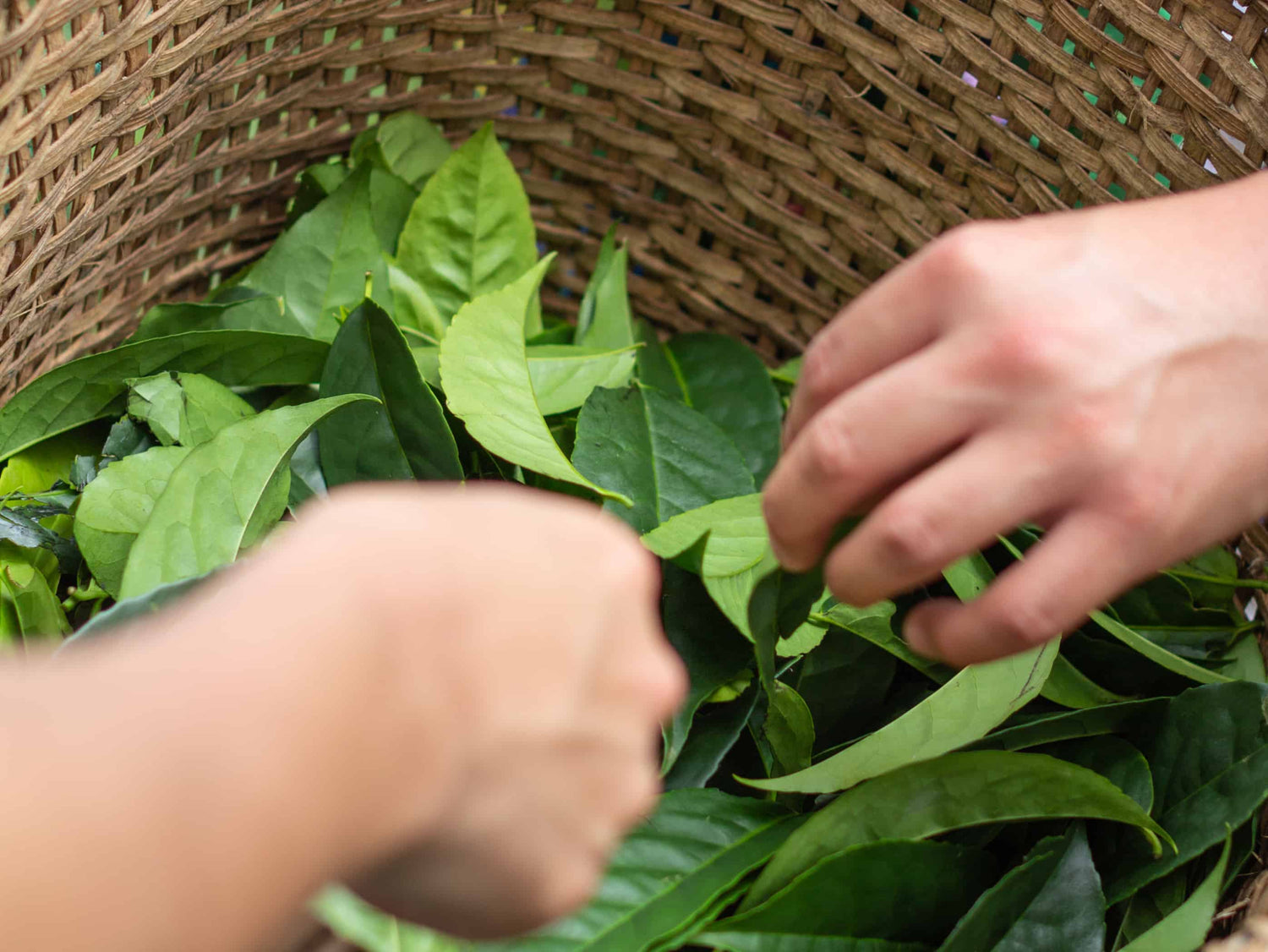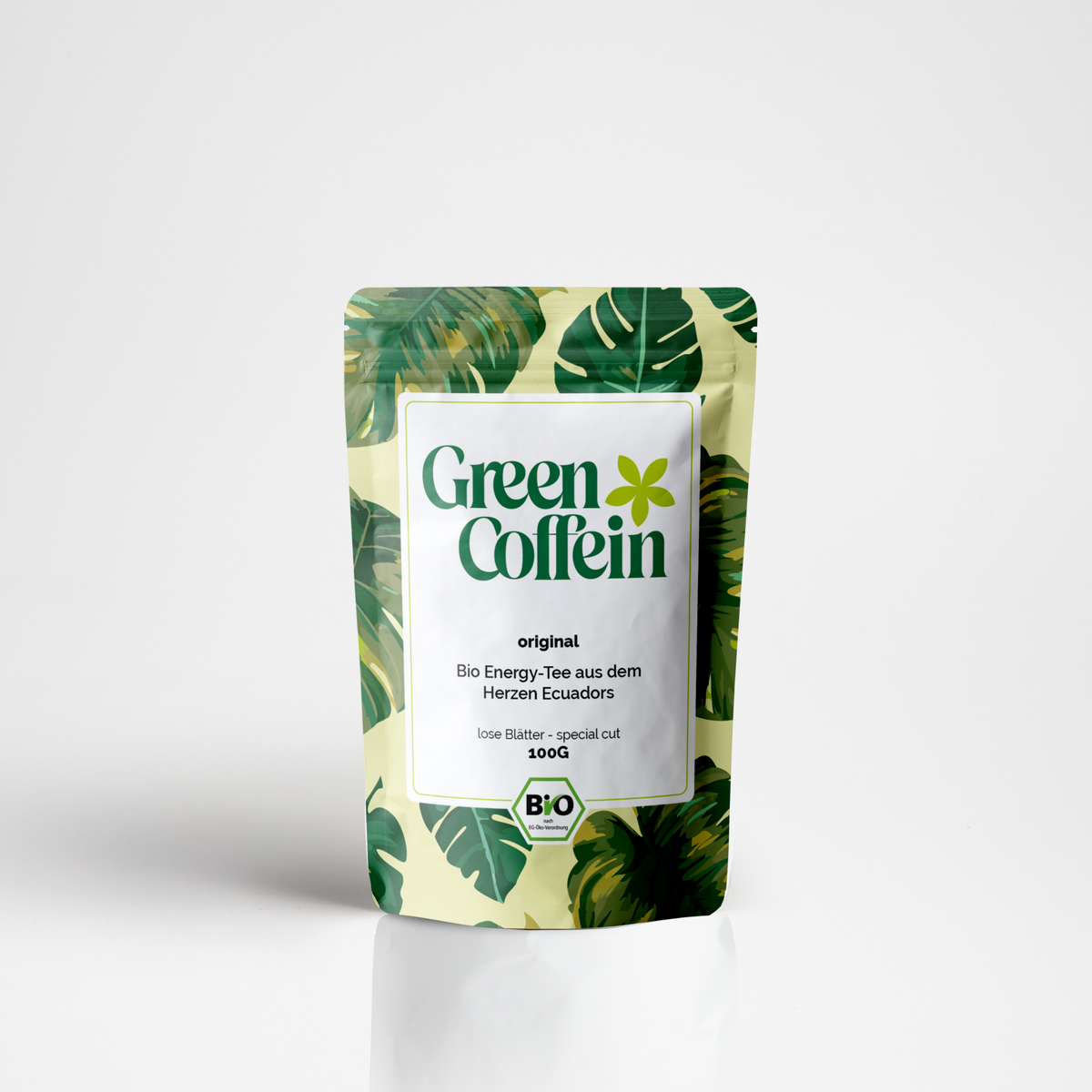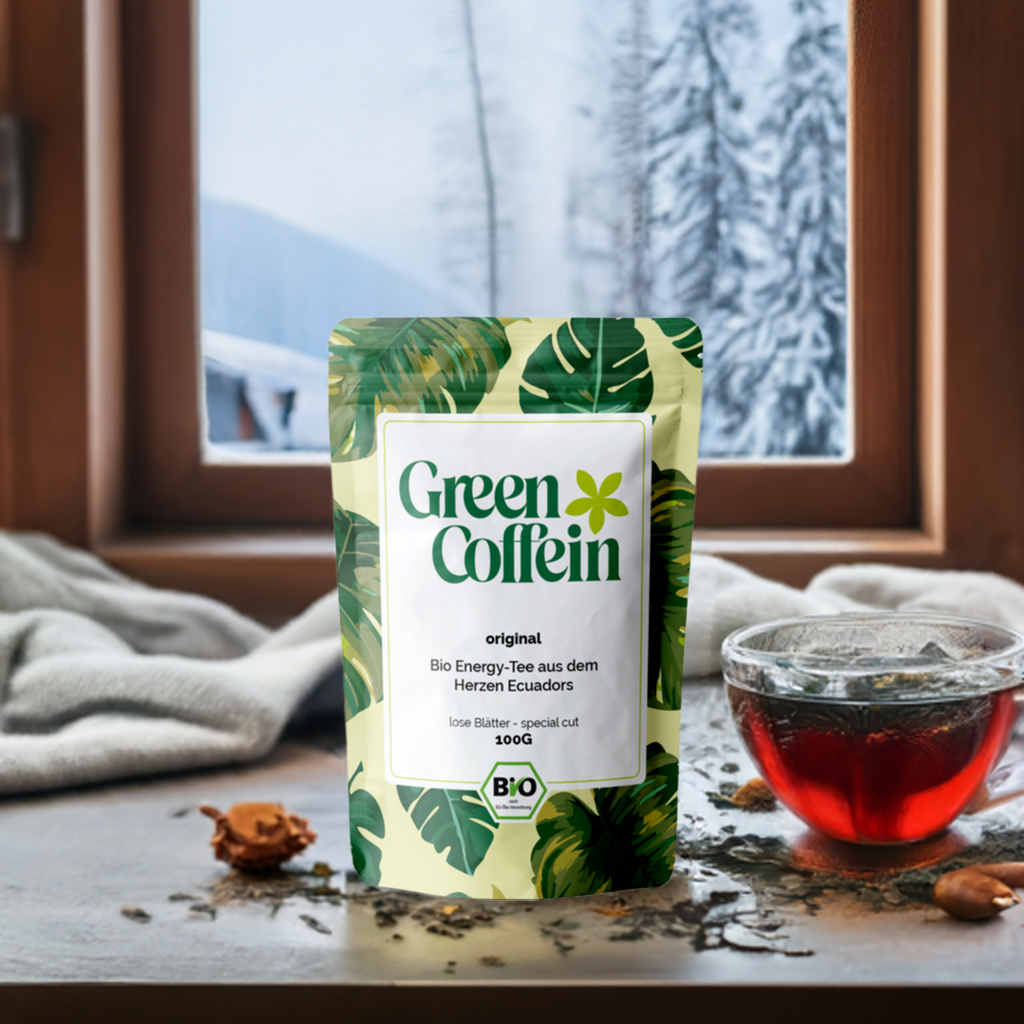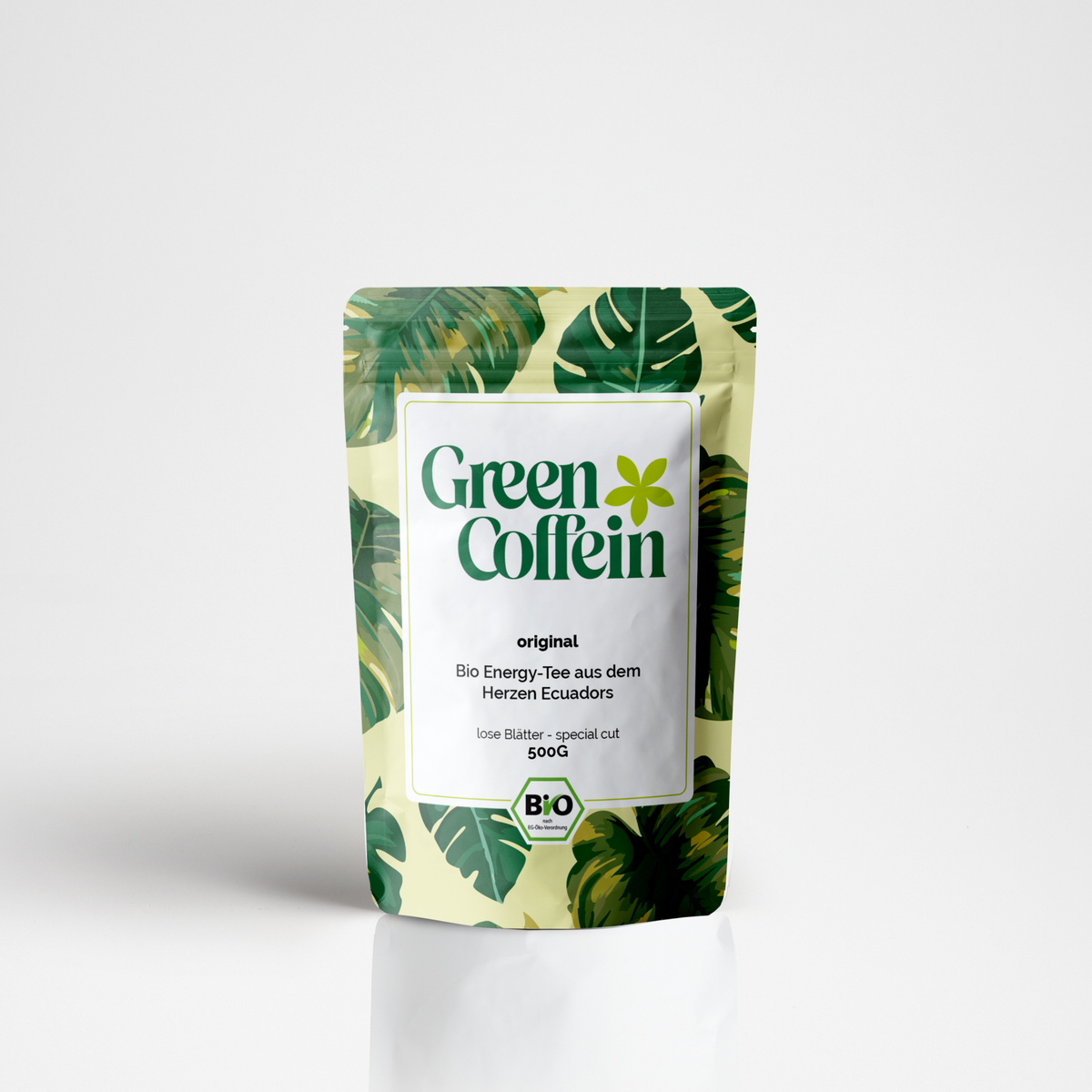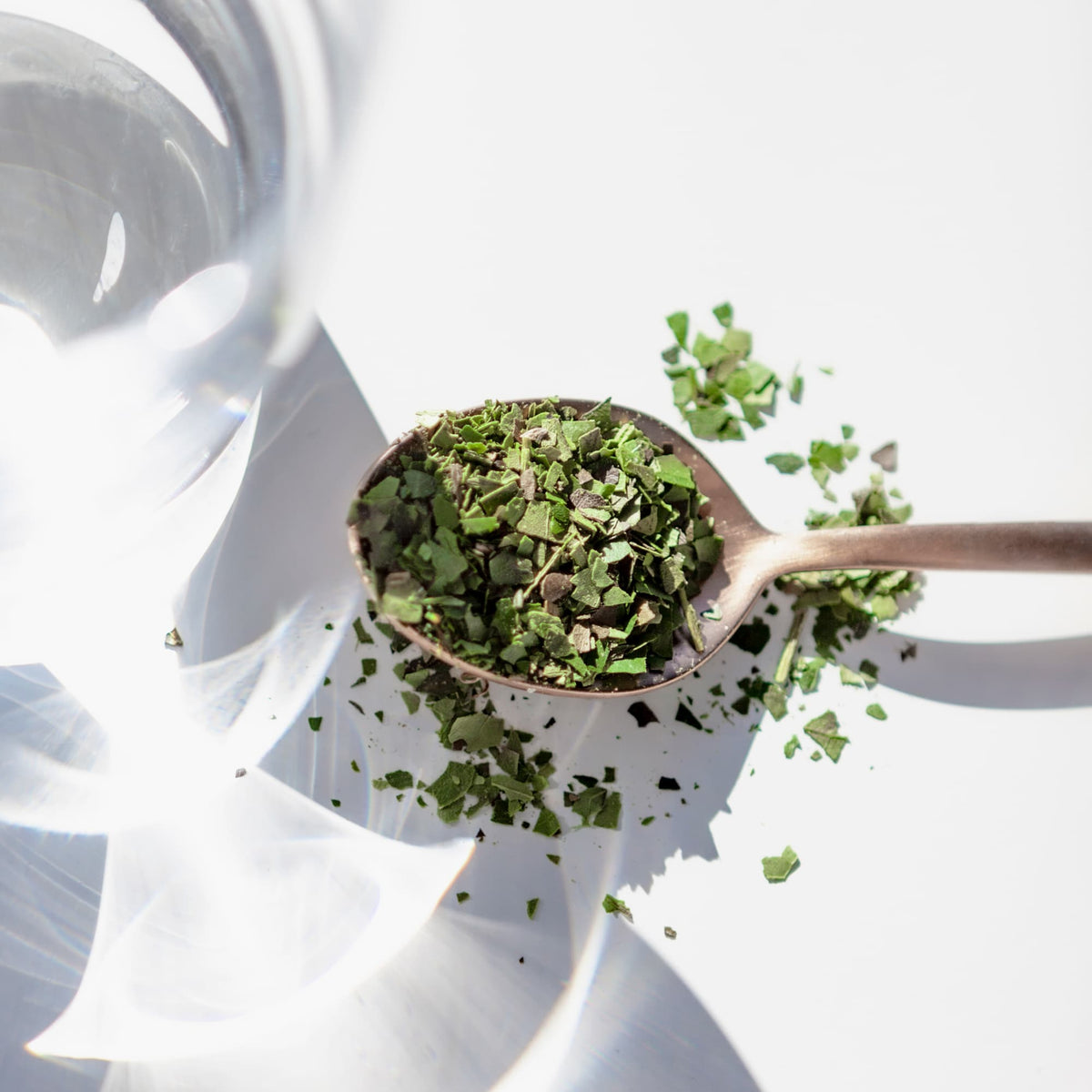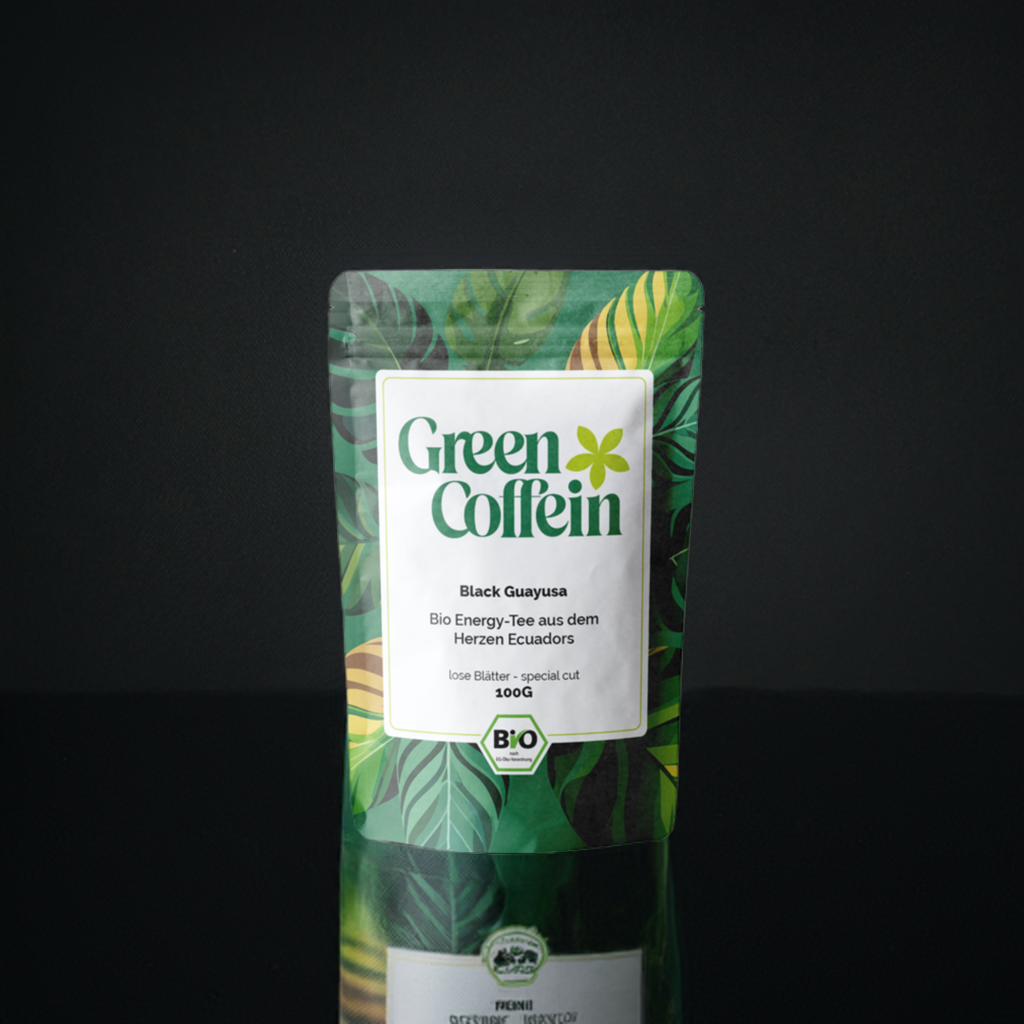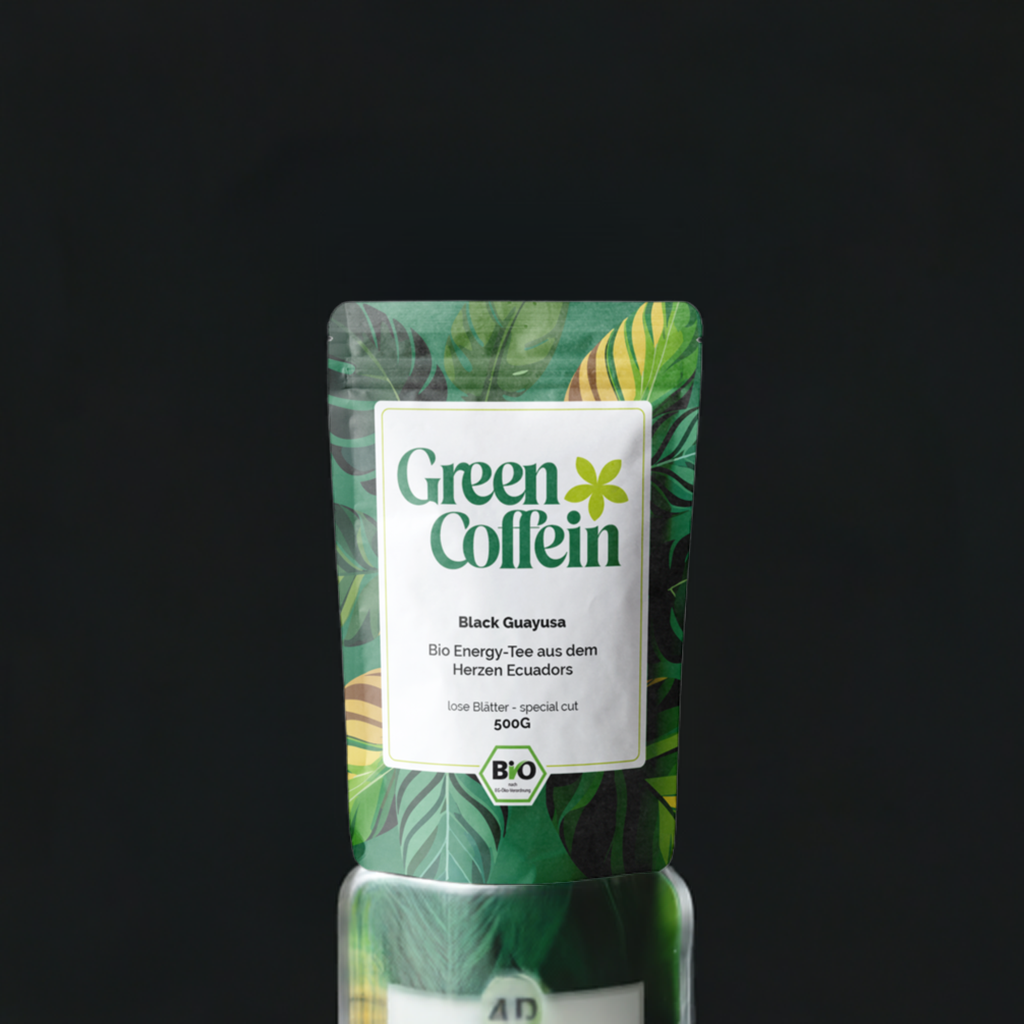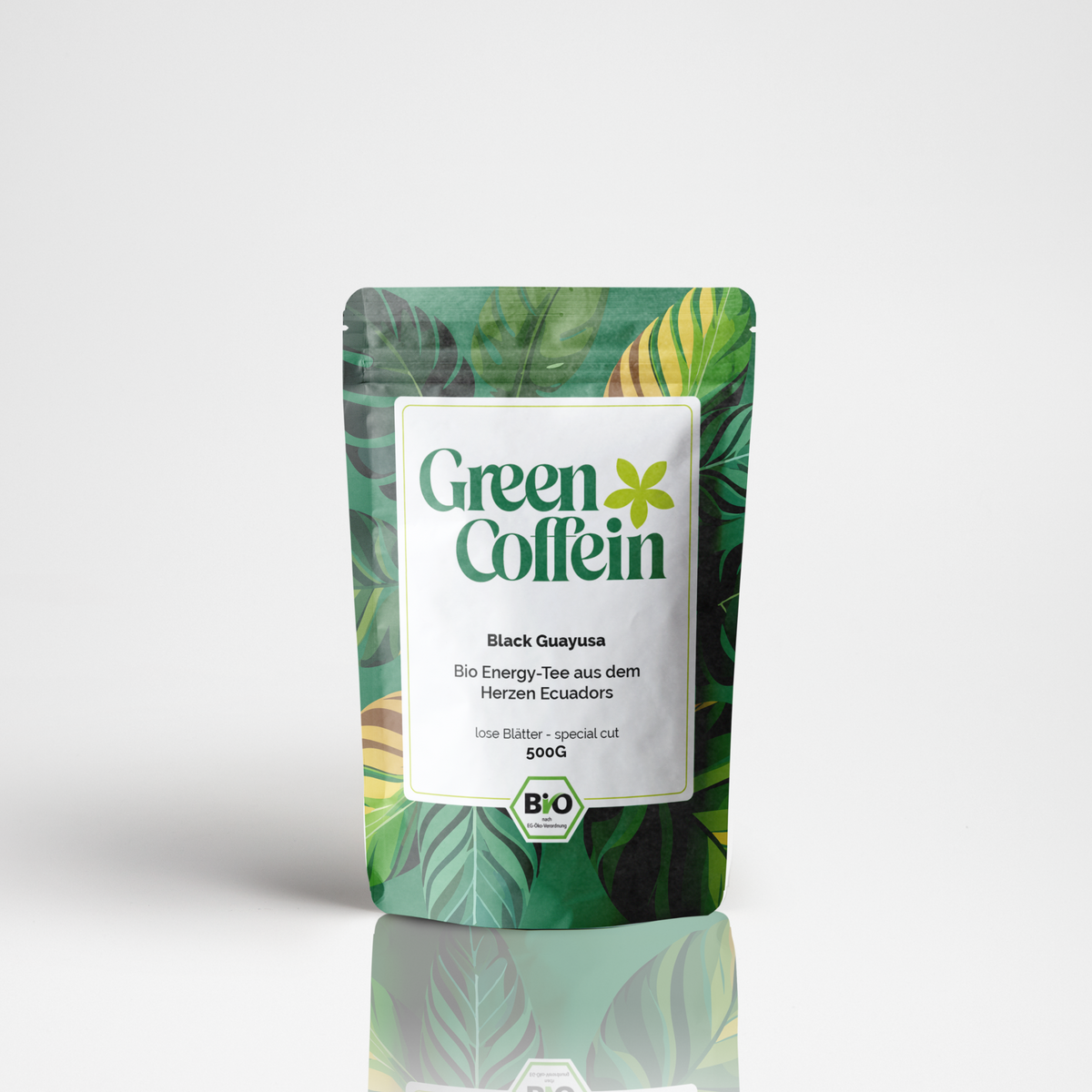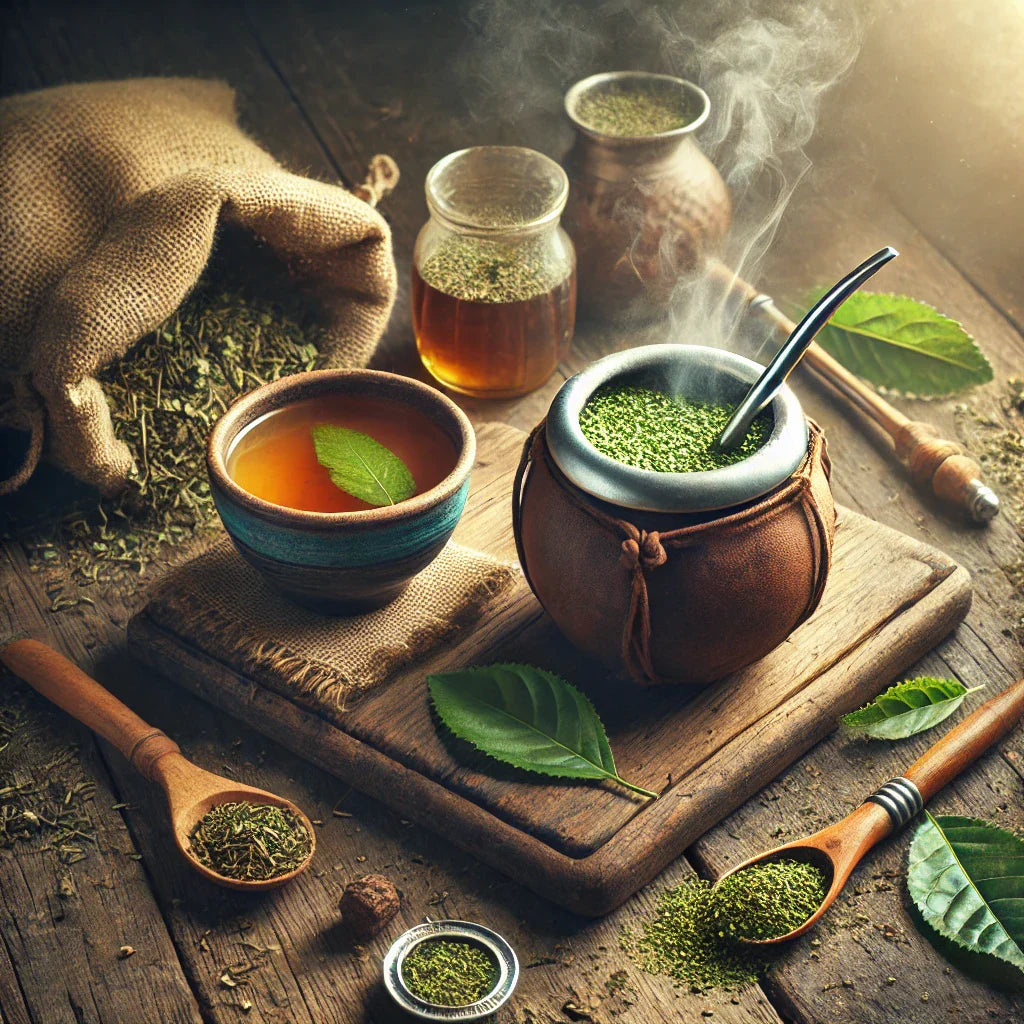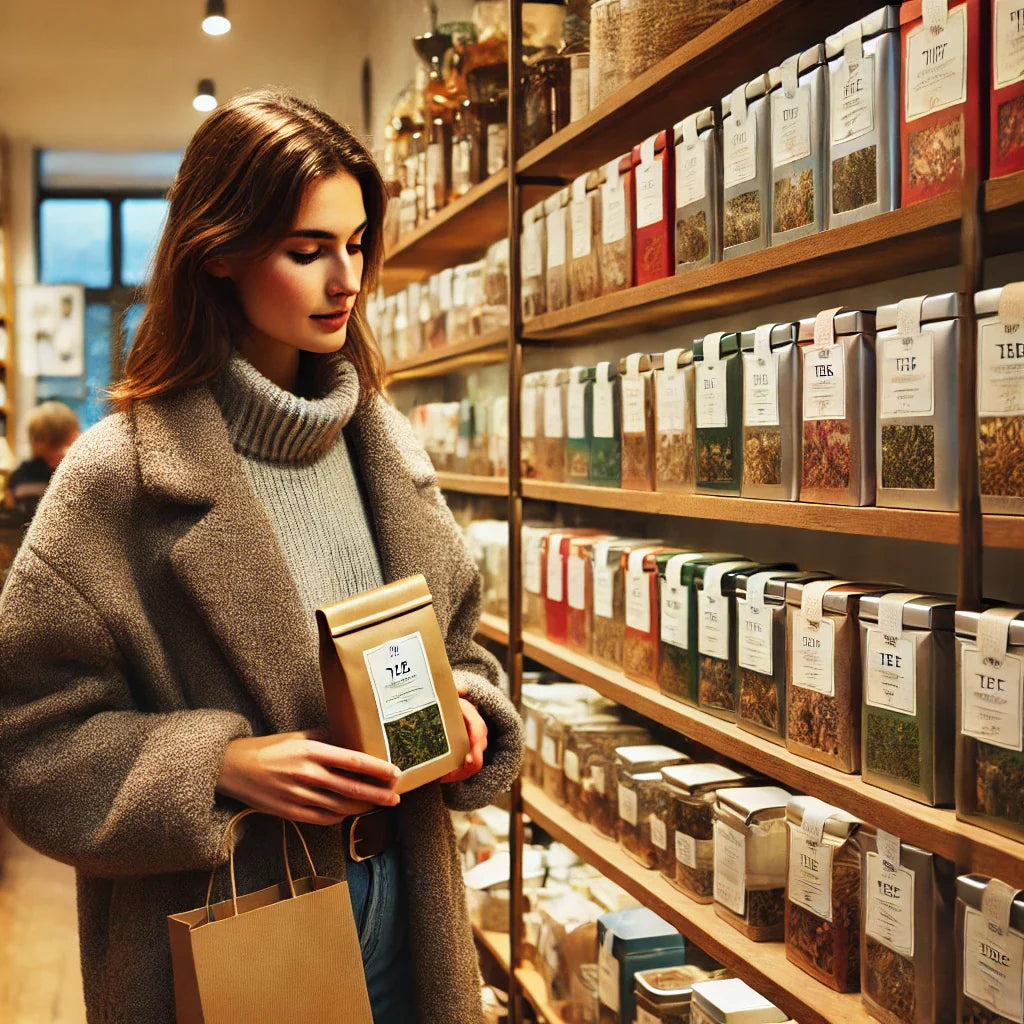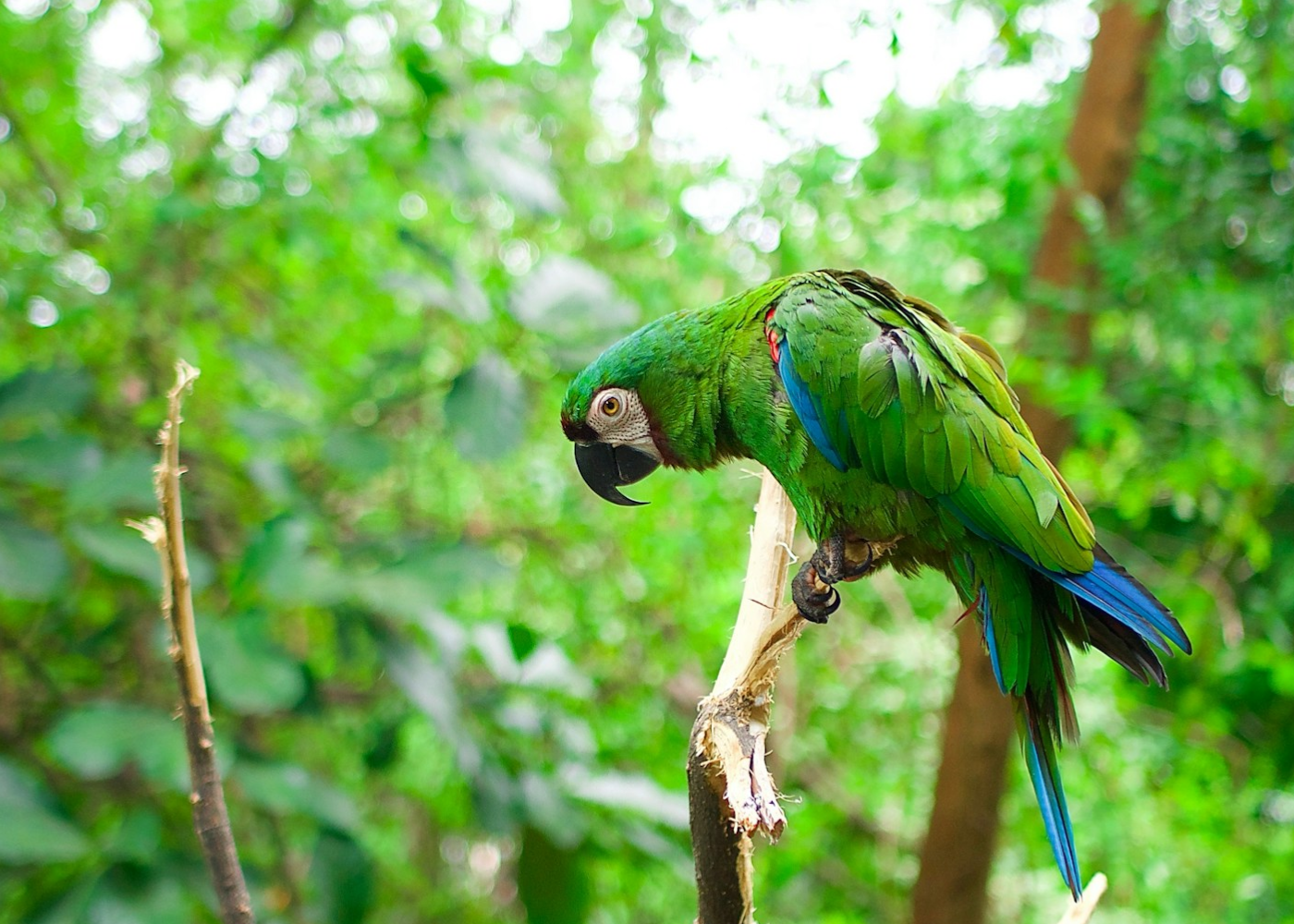Actually, the title itself is misleading: Guayusa is not a "tea" because it is not made from the tea plant, like green tea, black tea, or matcha. Guayusa leaves are harvested from succulent evergreen shrubs that belong to the holly genus (Ilex). Hence the scientific name: Ilex Guayusa. However, since Guayusa is prepared like tea and shares many of its properties, we will continue to refer to it as "Guayusa tea."
Get a quick overview of the world's most caffeinated leaf here. Learn where Guayusa comes from, what makes this energizing tea the perfect everyday companion, and how to prepare it.
Uncomplicated & mild
Guayusa can be prepared in almost all ways known in connection with tea.
In a bag? Sure. Loose in a pot? Logo. French press? Absolutely. Cold brew? Our insider tip.
In terms of taste, Guayusa can be described as a blend of herbal tea and green tea. Herbal tea, because it's sweet and aromatic, and green tea, because it has a pleasantly round body and no bitterness at all. You can steep Guayusa for as long as you like, as it contains virtually no tannins (bitter substances). 5-7 minutes is enough. Here's everything you need to know about preparation.
The tea of the Kichwas
Guayusa has a long history and tradition in Ecuador, specifically in the Amazon. The Kichwa people in particular have been using the plant for centuries for a variety of purposes. Guayusa tea is consumed during sacred rituals, ceremonies, and for medicinal purposes. These peoples believe the leaf has life-prolonging and wildlife-protecting properties, among other things. Of course, it has also been used there for generations as a natural stimulant. Learn more about the history of Guayusa here.
A European late bloomer
While the related mate tea was quickly appreciated by religiously motivated European visitors (mainly Jesuits) in Ecuador and became an integral part of South American exports, Guayusa is only now slowly making this step. This was probably mainly due to the Jesuits' popularity among the Ecuadorians. They encountered particularly little hospitality, which in return resulted in little to no trade in Ecuadorian goods, including guaysa. Only since 2008 has Ecuador begun exporting guayusa on a significant scale again. Learn more here (Social Impact)
Good for the Amazon
The Amazon and its inhabitants benefit greatly from Guayusa, especially when it is certified organic and therefore grown without pesticides.
While other plants submit to monoculture cultivation, guayusa fiercely resists such persistent practices: It simply doesn't thrive in monocultures. To grow healthily, it requires the shade of other forest dwellers. Therefore, guayusa plants are cultivated in special forest gardens, called chakras, alongside plants such as banana trees. This is accompanied by diverse reforestation of forest areas.
The powerful roots of the Guayusa shrub penetrate deep into the forest soil, strengthening it and protecting it from erosion. This protects the jungle and its inhabitants from devastating mudslides, especially during the rainy season. With their firmly rooted roots, these plants can be harvested even after 100 years, making their cultivation particularly sustainable.
To protect itself from pests, the plant produces caffeine in its leaves. Because Guayusa is particularly active in this process and can produce more caffeine than any other leaf, it is robust and reliably productive.
Without negatively impacting the local ecosystem, this tea has become a significant source of income for the people of the Amazon. We are proud to say that we play a central role in this development.



